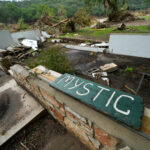A defense contractor said it will start building portable shelters for natural disasters and war zones that quickly unfold like a Transformer toy.
The shelters come with an onboard diesel generator to power heating, ventilation and air conditioning and unfold with the push of a button. They can also have showers and toilets.
Adaptive Methods vice president of manufacturing Keith Buckner said the Centreville, Va.-based company bought the rights to build and market the hard-walled shelter system, which was developed by researchers at the Y-12 National Security Complex at Oak Ridge in Tennessee.
Buckner declined to say how much Adaptive Methods paid, but said the company has about $1.3 million invested in the project.
Buckner said the company’s expansion at The Enterprise Center Inc. in Chattanooga, where it will make the shelters, will eventually add about 100 jobs. He said production will start in about two months and the first shelters should be available about April.
The company is looking for shelter buyers, like the Federal Emergency Management Agency and National Guard units.
The shelter has external walls with a core made of high-density polyethylene layered between galvanized steel skins and weigh about 14,000 pounds. It can also be made to protect against bullets.
Possible uses include housing for first responders or displaced families, medical triage facilities or a decontamination unit and it can be transported by trailer, truck, rail or a large helicopter.
“It is stronger than a FEMA trailer,” Buckner said at a news conference attended by political officials, chamber of commerce executives and representatives of the Y-12 complex. He said wind resistance tests are planned.
When a button is pushed, the walls and 8-foot-tall roof of the 19-feet long by 8-feet wide shipping container unfold to become a 400-square foot shelter.
The cost initially will be in the $200,000 range but Buckner said that could decrease after mass production begins. He said the shelters are designed for temporary use but will last at least 10 years.
Lee Bzorgi, Y-12’s senior technical adviser who invented the shelter system, said in a statement that “most rigid-walled shelters require three to 10 people and nearly 40 minutes to set up, and travel trailers and mobile homes simply are not designed for transport into disaster areas.”
Buckner said this week marked the “start of a 120-day marketing blitz.”
After Hurricane Katrina hit the Gulf Coast in 2005, FEMA purchased 25,000 manufactured homes built at a cost of more than $850 million.
Was this article valuable?
Here are more articles you may enjoy.

 Hyundai Unveils New Humanoid Robot for Work in Car Factories
Hyundai Unveils New Humanoid Robot for Work in Car Factories  Munich Re: Insured Losses From Wildfires, Storms and Floods Hit Record High
Munich Re: Insured Losses From Wildfires, Storms and Floods Hit Record High  World’s Top 10 Extreme Weather Events in 2025
World’s Top 10 Extreme Weather Events in 2025  Billionaire NFL Owner Suing Over Billboards Near His SoFi Stadium
Billionaire NFL Owner Suing Over Billboards Near His SoFi Stadium 